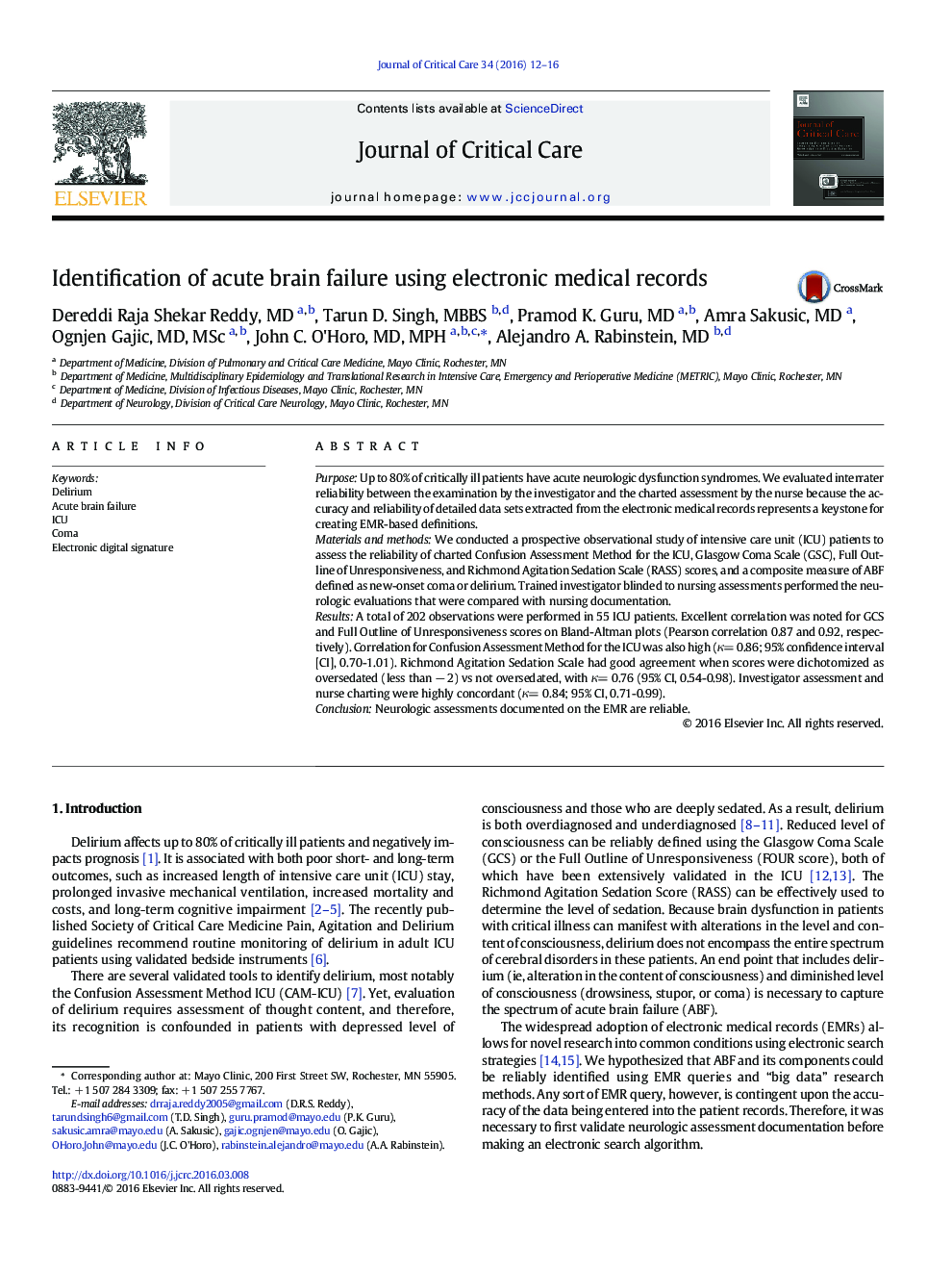| Article ID | Journal | Published Year | Pages | File Type |
|---|---|---|---|---|
| 5885138 | Journal of Critical Care | 2016 | 5 Pages |
PurposeUp to 80% of critically ill patients have acute neurologic dysfunction syndromes. We evaluated interrater reliability between the examination by the investigator and the charted assessment by the nurse because the accuracy and reliability of detailed data sets extracted from the electronic medical records represents a keystone for creating EMR-based definitions.Materials and methodsWe conducted a prospective observational study of intensive care unit (ICU) patients to assess the reliability of charted Confusion Assessment Method for the ICU, Glasgow Coma Scale (GSC), Full Outline of Unresponsiveness, and Richmond Agitation Sedation Scale (RASS) scores, and a composite measure of ABF defined as new-onset coma or delirium. Trained investigator blinded to nursing assessments performed the neurologic evaluations that were compared with nursing documentation.ResultsA total of 202 observations were performed in 55 ICU patients. Excellent correlation was noted for GCS and Full Outline of Unresponsiveness scores on Bland-Altman plots (Pearson correlation 0.87 and 0.92, respectively). Correlation for Confusion Assessment Method for the ICU was also high (κ= 0.86; 95% confidence interval [CI], 0.70-1.01). Richmond Agitation Sedation Scale had good agreement when scores were dichotomized as oversedated (less than â 2) vs not oversedated, with κ= 0.76 (95% CI, 0.54-0.98). Investigator assessment and nurse charting were highly concordant (κ= 0.84; 95% CI, 0.71-0.99).ConclusionNeurologic assessments documented on the EMR are reliable.
